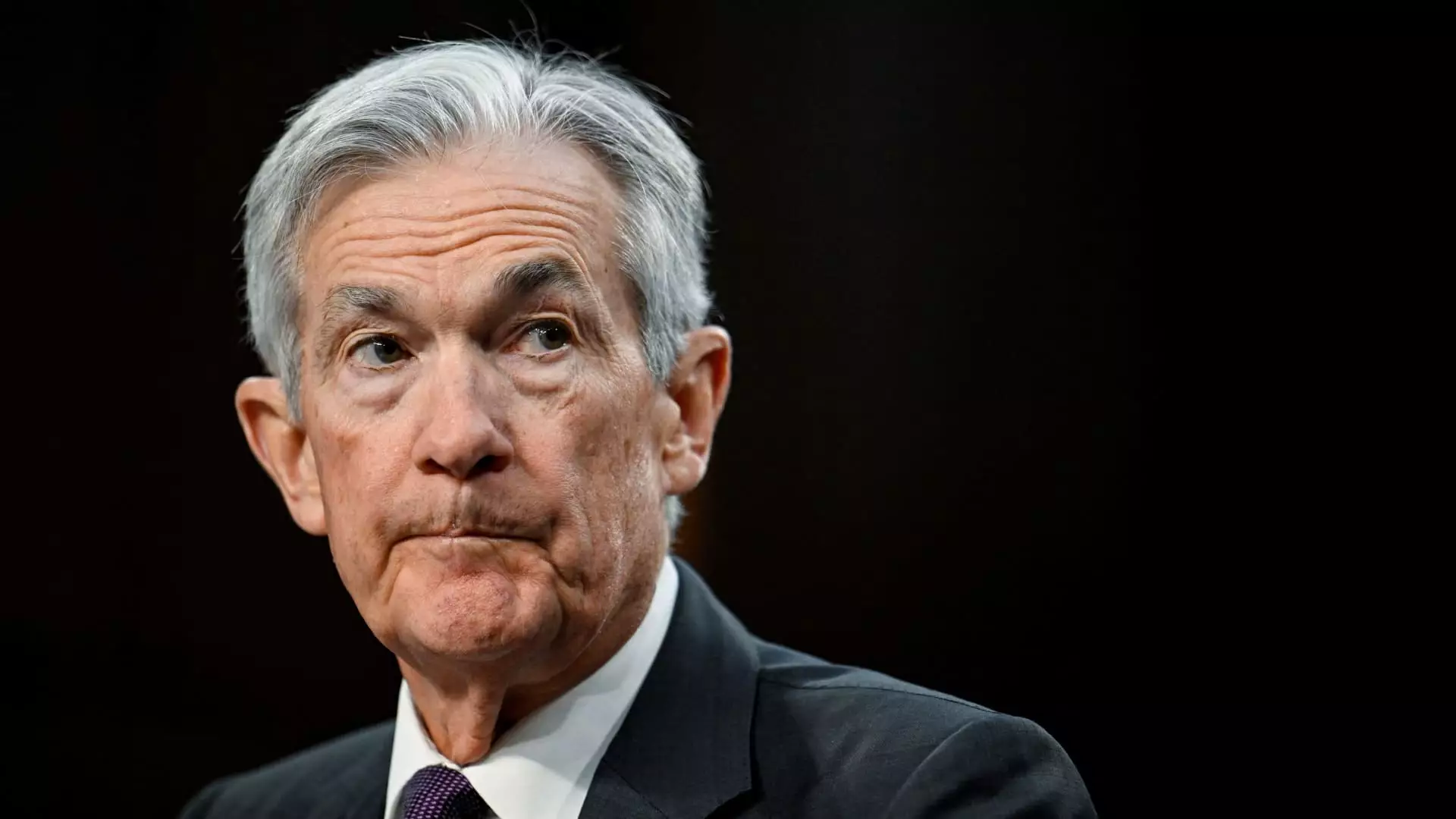As uncertainties loom over the economic horizon, the Federal Reserve finds itself in a precarious position. Officials frequently describe monetary policy as “well-positioned” to adapt to potential economic alterations, suggesting a sense of readiness for whatever shifts may arise. Yet, this characterization may be misleading. Instead of being able to recalibrate policy dynamically, the Fed is more accurately depicted as stagnating in a state of neutrality, waiting to navigate through a haze of unpredictability that threatens the stability of financial markets and economic growth.
The Fed’s current strategic posture reflects the ambiguity across various sectors influenced by external policies. The complexities surrounding trade and immigration policies, coupled with upcoming regulatory changes, have prompted caution among policymakers. Raphael Bostic, President of the Atlanta Federal Reserve, highlighted these uncertainties in a recent blog post, stressing that the variables at play could significantly complicate decision-making processes.
In an environment permeated by uncertainty, the communication from Fed officials, often referred to as “Fedspeak,” plays a crucial role in shaping market expectations and reactions. The recent spate of comments from Chair Jerome Powell and other officials underscored a unified narrative while simultaneously expressing apprehension regarding the escalating volatility tied to President Donald Trump’s trade initiatives. Consistent references to “uncertainty” indicate that the Fed is profoundly aware of the delicate balance it must maintain while navigating external pressures.
The minutes released from the Federal Open Market Committee (FOMC) meeting captured this concern, showcasing an overwhelming acknowledgment of the economic unpredictability that surrounds fiscal, trade, and regulatory policies. Concerns regarding how these factors could ripple through the economy have become a central theme affecting both employment trends and inflation metrics.
In their discussions, Federal Reserve officials have been cautious, particularly concerning inflation, which has persistently strayed from its target of 2%. St. Louis Fed President Alberto Musalem expressed that the risks regarding inflation are skewed to the upside. Although current scenarios indicate a gradual convergence toward the 2% target, Musalem pointed out the potential for prolonged high inflation levels that could dampen economic activity.
Moreover, while rates currently linger between 4.25% and 4.5%, the commentary surrounding interest rates reveals a reluctance to implement cuts in the face of persistent inflationary concerns. The Fed’s inclination to adopt a “modestly restrictive” policy regime hints at a need for continued vigilance rather than rapid monetary easing.
The worry over tariffs and trade disruptions also casts a significant shadow over the Fed’s ability to make decisive policy changes. Chicago Fed President Austan Goolsbee weighed in on the potential ramifications of tariffs, noting that the extent and breadth of their application could dictate economic responses. However, Greed for low tariffs must be tempered with caution, as aggressive trade policies may yield unforeseen consequences—akin to the economic shocks experienced during the COVID-19 pandemic.
Given this backdrop, the FOMC appears to prioritize further progress on inflation stabilization before undertaking any rate adjustments. The committee recognizes that abrupt changes to the federal funds rate could result in volatility that may exacerbate the very uncertainties they seek to mitigate.
In addition to concerns about inflation and trade, the Fed must grapple with risks to financial stability, particularly as they relate to leverage and bank-held long-duration debt. According to economist Mark Zandi, the $46.2 trillion U.S. bond market exhibits vulnerability that could trigger significant sell-offs, generating a ripple effect throughout the broader economy. He cautioned that the bond market’s fragility poses a serious risk, making any chance of interest rate cuts highly improbable, especially as uncertainties linger.
Zandi’s remarks reflect a growing unease regarding the robustness of financial markets, suggesting that the Fed’s ability to pivot toward rate reductions could be stymied until a clearer economic picture emerges. The expectation of potential rate cuts could indeed be overstated, as real-world factors continue to challenge market stability and economic confidence.
As the Federal Reserve grapples with a landscape rife with uncertainty, the imperative for a cautious yet adaptive monetary policy has never been more evident. Amidst the complexities of trade, inflation, and financial stability, the Fed’s current strategy underscores the importance of careful deliberation and measured actions. Navigating this unpredictable terrain demands an awareness of both macroeconomic indicators and the nuanced dynamics of policy implementation. Ultimately, the ability to maintain stability and confidence in the economy hinges on the Fed’s responsiveness in the face of evolving challenges.

